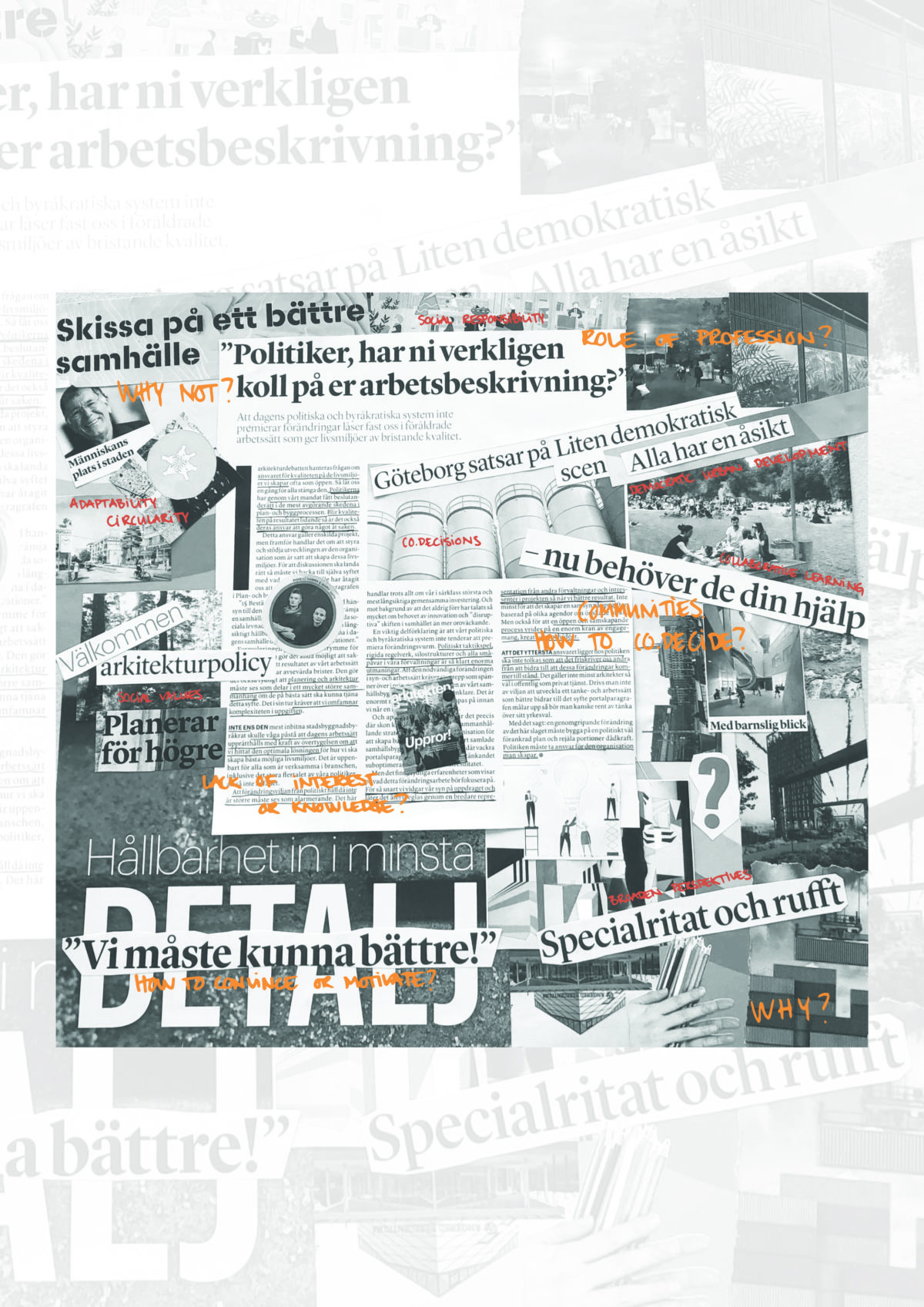case study
Gothenburg is Sweden’s second biggest city with about 580 000 inhabitants in the municipality. The city is constantly growing, due to urbanization and more people are moving, working, staying and visiting the city. The city administration itself is one of the biggest employers with more than 50 000 employees. This makes the administration complex and sometimes difficult to grasp.
In Sweden there is a municipal plan monopoly. It means that it is up to each individual municipality to set specific plans, guidelines and rules about the urban development and how land should be used and built within the municipality.
Urban development always starts with an idea. The idea might address a demand or just be a desire for change. It can come from both private and public actors, but it is a political decision to give the project idea clearance. In order for development to take place, different interests must be weighed against each other and this occurs in the planning process.
planning praxis
The planning process is long and complex. It can take up to 6-8 years from an idea to completion. The City Planning Office (SBK) is the city administration who has the main responsibility, but all administrations of the city affected by the development are involved. So as for other stakeholders, property owners and investors.
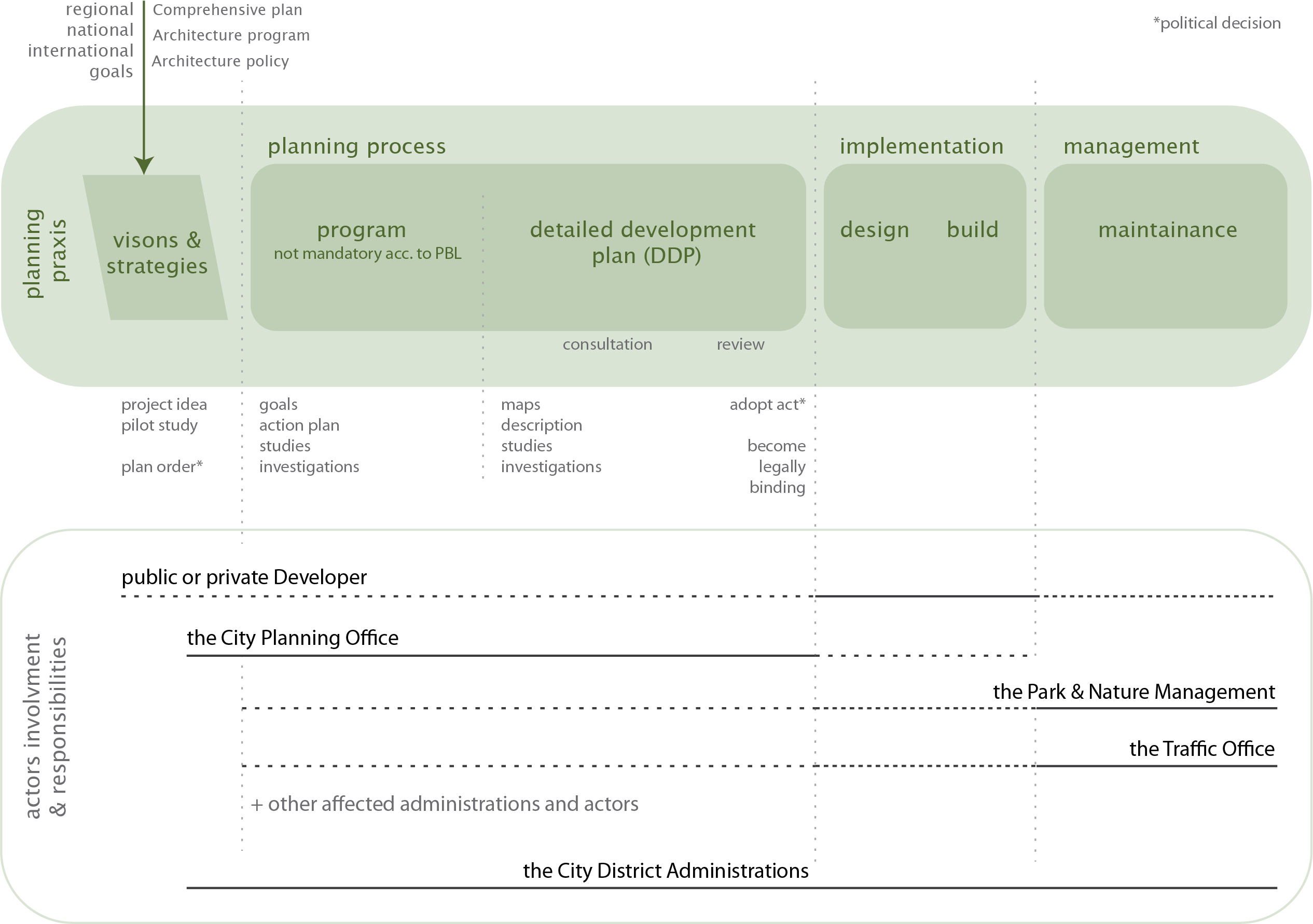
There are three main phases with a pre-phase for the planning process. The pre-phase starts with an idea and a pilot study to evaluate the idea’s feasibility. Once an idea or project gains political approval, an officer is assigned to the project. The pilot study is initiated to prepare and formulate conditions and recourses for the project. Then, depending on the projects scope, location and size, a plan program might be needed before the detailed development plan phase can start. After public input and consultation, the plan is adjusted before a final review. Afterwards, it is being adopted and becomes legally binding, again by a political decision. From idea until the plan becomes legally binding, it takes at least 2.5 years, but usually longer. Then follows the implementation phase, that also varies in time, and finally everyday management and maintenance.
There is a lot of actors involved in the process, with different agendas. Therefore, the content and development of each plan depends on the actors, the sites location and complexity, as well as the assigned officer’s personal interests and values. During following phases its other actors (private or public) in charge, and the handover between phases varies in quantity and quality.
Citizens have an influence during the planning process both through the regulated consultations and reviews and through dialogues in the daily work of the civil servants. Also, in early stages during investigations, studies and dialogues conducted by the assigned officer or by the different City District Administrations – who today (June 2020) has the main responsibility for citizen knowledge.
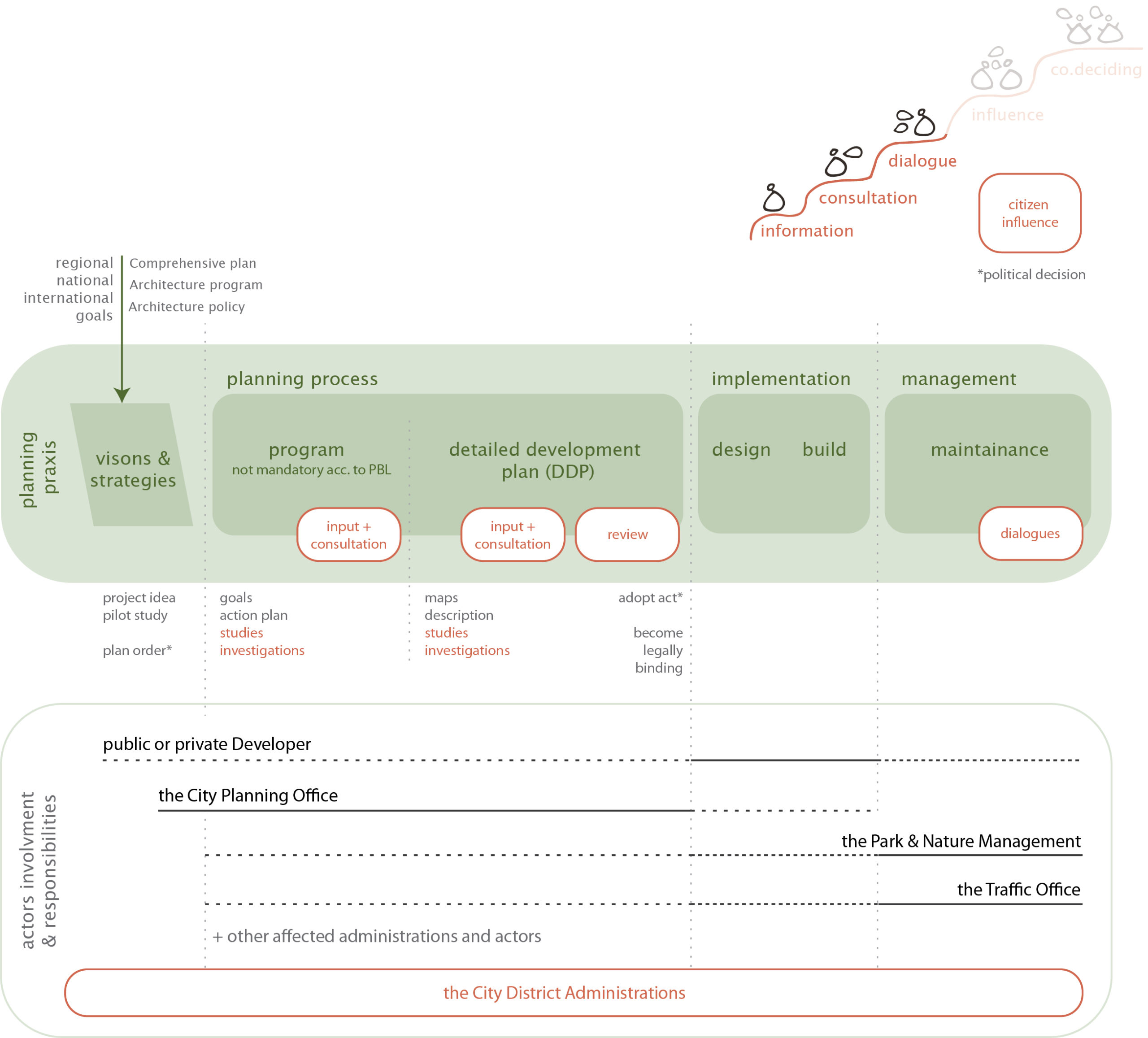
citizen influence
Except from taking part during the planning process there are other ways to engage and influence the development of the city. During ordinary operation there are many initiatives for citizens to participate and engage with diverse levels of influence.
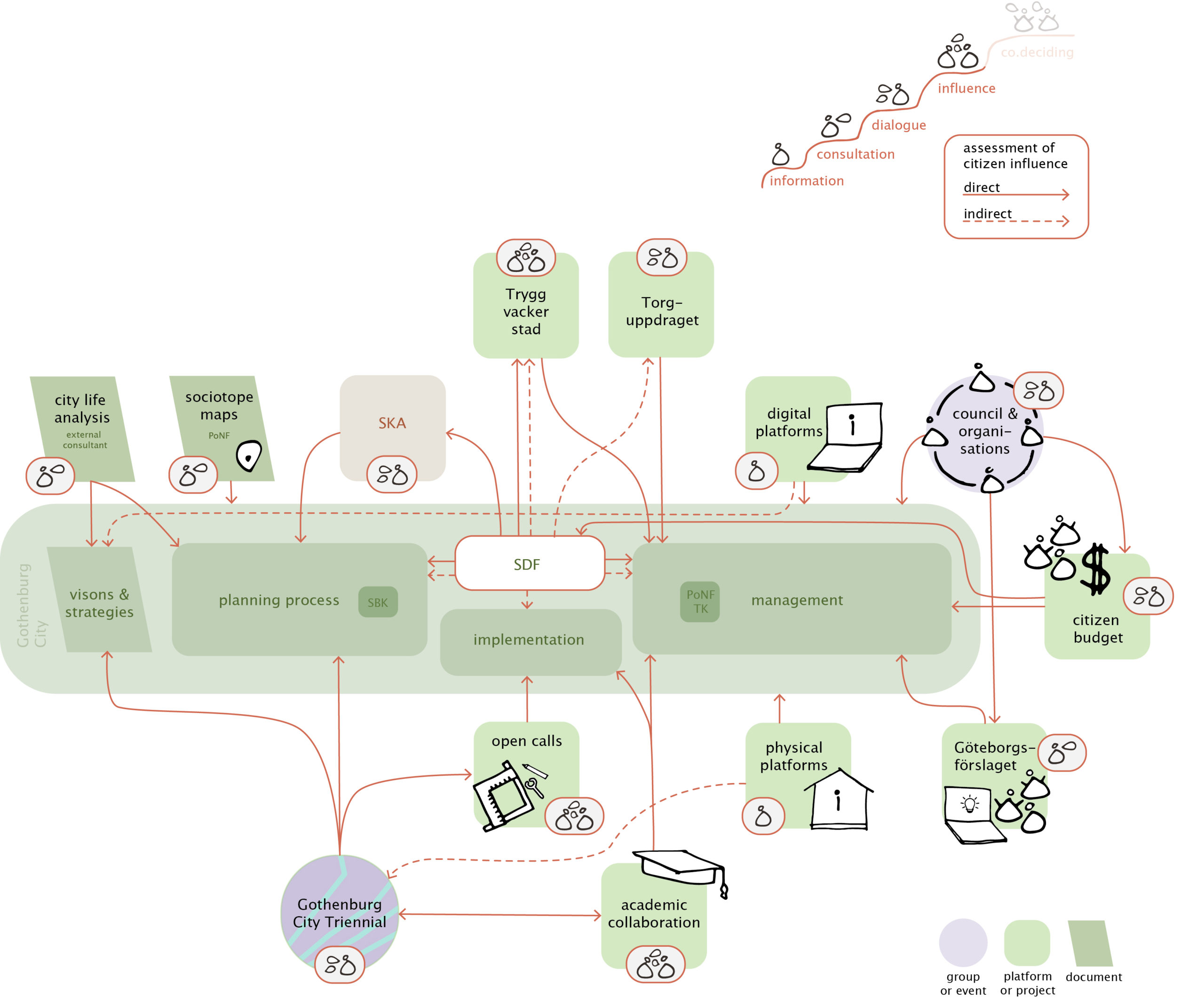
The level of participation and influence as well as representation varies a lot, and some of these initiatives are processed without necessary validity. The diagrams illustrates the connections between the initiatives in relation to the urban planning praxis. The lines are highlighting where citizen have influence and where some missing links are found.
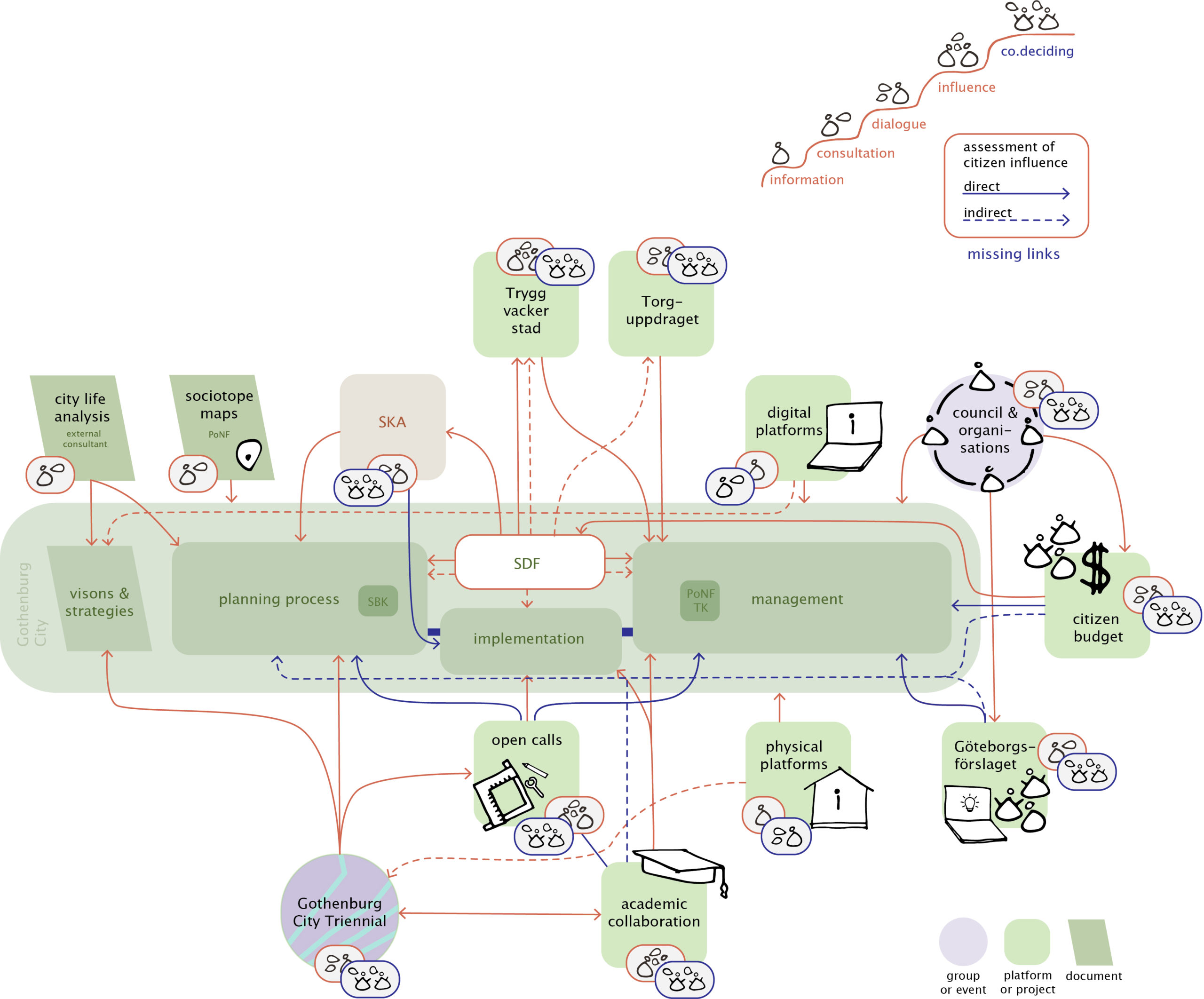
the full case study with analysis is presented in chapter three in the booklet
1. introduction
2. theoretical framework
3. case study: Gothenburg City
4. co.creation process model
5. reflections & discussion
